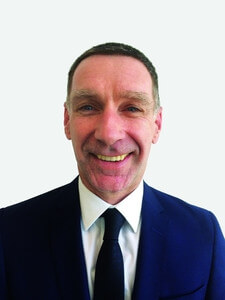Retirement
SMSFs have too many eggs in the cash basket
SMSFs assets may have hit new records, but funds are still hoarding cash, Jason Dunn says.
SMSFs have too many eggs in the cash basket
SMSFs assets may have hit new records, but funds are still hoarding cash, Jason Dunn says.

As the Australian population ages, more people are establishing their own SMSF to chase better returns. Therefore, we can expect even more money to flow into the sector, but SMSFs may need to broaden their asset exposure to diversify their investment risk.
A rise in the number of self-managed superannuation funds and their assets to all-time highs in the June quarter of 2016 highlights the appeal of do-it-yourself investing for many Australians. But SMSFs are still piling a considerable level of money into cash, which may reduce wealth creation investment opportunities over the long-term.
A record 577,236 SMSFs existed in Australia as at June 30, 2016, up from 570,689 as at March 31, 2016, according to the latest Australian Tax Office statistics. Those funds had more than one million members in June or 1,087,841 to be exact.
SMSFs held $621.7 billion in assets as at June 30, 2016, which is up 2.7 per cent from $607.1 billion in the March quarter, according to the ATO data. Their assets accounted for around 30 per cent of the total superannuation asset pool of $2.1 trillion. It’s a huge sector and growing rapidly.

While the trend is a positive sign for the retirement savers, the ATO data also reveals the danger of going it entirely alone. Many SMSFs remain totally unguided in their investment decisions and appear to still have a huge amount of their assets invested in cash.
SMSFs’ holdings of cash and term deposits rose to a record high of $158.9 billion in the June quarter, 2016, up from $157.3 billion in the March quarter of 2016. Cash investments now represent 26 per cent of total SMSF assets.
Retaining too much in cash can endanger wealth creation over time. Year-on-year, the inflation rate edges up, typically between 2 per cent and 3 per cent, which means that value of your cash held in low-rate savings account is probably declining in real terms. An adviser can help to create a strategy that balances returns while holding an optimum level of cash for unforeseen circumstances and economic cushioning.
Exposure to growth assets, and different asset classes, is important to grow your wealth. This is another area where SMSF trustees may benefit from advice. As it stands, SMSFs held almost one-third of their collective wealth in Australian share holdings.
In particular, SMSF shareholdings of Australian shares alone hit $187.8 billion in the June quarter of 2016. This was up 4.3 per cent from $180 billion in the March quarter, according to ATO data and local shares made up around 30 per cent of all SMSF assets. Here just $3.3 billion was invested directly in offshore equities, or less than 1 per cent of total SMSF assets, according to the ATO data.
SMSFs have a great opportunity to explore offshore asset markets via the huge number of international managed funds or exchange traded funds (ETFs) available, where there can be opportunities to diversify their portfolios across different asset classes and countries.
In contrast, SMSF Australian property holdings continue to grow, as volatile share markets increase the appeal of bricks and mortar which to some trustees can look increasingly stable. Investments by SMSFs into residential property totalled a record $24.4 billion as at June 30, 2016, up from $24.0 billion in the March quarter, according to ATO data. Commercial property investments also jumped to $68.6 billion, up from $67.4 billion in the previous quarter.
Given the higher yields on residential property (usually 3 per cent to 5 per cent) and commercial property (ranging from 7 per cent to 8 per cent), property is drawing increased numbers of SMSF investors. Moreover, over the long term, growth in the capital value of property can boost your wealth, with long-term returns rivalling those gained on shares.
While cash serves a key purpose in a SMSF, it’s important to strike the right balance of defensive and growth assets dependent on your situation and stage in life.
And with the recent round of changes to superannuation by the federal government, it is becoming increasingly difficult for all Australians to access to the Centrelink Age Pension with the eligibility age being raised.
The reality is that you need to be prepared to provide for our own retirement. Australian women now live to an average age of 84.5 and for men 80.4, ABS statistics show. We are living for much longer into retirement than we have ever before. Although most people don’t consider it, starting to prepare for a healthy, active retirement should start as soon as we enter the workforce.
Jason Dunn, strategy & distribution general manager, Anne Street Partners Financial Services

Self managed super fund
Financial progress hinges on ambition, not income, says Stake Report
Australia faces a financial turning point, with new research from online investment platform Stake revealing a nation divided into two distinct groups: the 'Starters', who invest and feel in control ...Read more

Self managed super fund
OKX targets Australia's $1 trillion SMSF market with new crypto platform launch
In a significant move aimed at capitalising on Australia's burgeoning digital asset market, global onchain technology company OKX has unveiled a new Self-Managed Super Fund (SMSF) expansion on its ...Read more

Self managed super fund
Industry leaders launch SMSF Innovation Council to drive digital transformation
A consortium of finance industry leaders has launched an SMSF Innovation Council to help Australia's $1.02 trillion self-managed superannuation fund industry navigate digital transformation. Read more

Self managed super fund
Superannuation guarantee to be paid on government paid parental leave, says ASFA
The Association of Superannuation Funds of Australia (ASFA) has hailed the government's decision to include Superannuation Guarantee payments with its Paid Parental Leave policy as a critical step ...Read more

Self managed super fund
SMSF experts advise against hasty reactions to potential super tax changes
As the Australian Government proposes a new tax measure on superannuation earnings for balances exceeding $3 million, experts from the self-managed super funds (SMSF) sector are urging members not to ...Read more

Self managed super fund
Federal government announces changes to superannuation contribution caps
The Federal Government has announced changes to the superannuation contribution caps, impacting self-managed super funds (SMSFs) and their members from 1 July 2024. Read more

Self managed super fund
SMSF Association calls for joint effort to tackle early super access
The SMSF Association is calling on a collaborative approach including the Government, the Australian Taxation Office (ATO), the Australian Securities and Investments Commission (ASIC), and the ...Read more

Self managed super fund
Rest Super members file class action over alleged insurance premium deductions
Shine Lawyers has initiated a class action lawsuit against Rest Superannuation (Rest), alleging the unlawful deduction of income protection insurance premiums from members' superannuation accounts. Read more

Self managed super fund
Financial progress hinges on ambition, not income, says Stake Report
Australia faces a financial turning point, with new research from online investment platform Stake revealing a nation divided into two distinct groups: the 'Starters', who invest and feel in control ...Read more

Self managed super fund
OKX targets Australia's $1 trillion SMSF market with new crypto platform launch
In a significant move aimed at capitalising on Australia's burgeoning digital asset market, global onchain technology company OKX has unveiled a new Self-Managed Super Fund (SMSF) expansion on its ...Read more

Self managed super fund
Industry leaders launch SMSF Innovation Council to drive digital transformation
A consortium of finance industry leaders has launched an SMSF Innovation Council to help Australia's $1.02 trillion self-managed superannuation fund industry navigate digital transformation. Read more

Self managed super fund
Superannuation guarantee to be paid on government paid parental leave, says ASFA
The Association of Superannuation Funds of Australia (ASFA) has hailed the government's decision to include Superannuation Guarantee payments with its Paid Parental Leave policy as a critical step ...Read more

Self managed super fund
SMSF experts advise against hasty reactions to potential super tax changes
As the Australian Government proposes a new tax measure on superannuation earnings for balances exceeding $3 million, experts from the self-managed super funds (SMSF) sector are urging members not to ...Read more

Self managed super fund
Federal government announces changes to superannuation contribution caps
The Federal Government has announced changes to the superannuation contribution caps, impacting self-managed super funds (SMSFs) and their members from 1 July 2024. Read more

Self managed super fund
SMSF Association calls for joint effort to tackle early super access
The SMSF Association is calling on a collaborative approach including the Government, the Australian Taxation Office (ATO), the Australian Securities and Investments Commission (ASIC), and the ...Read more

Self managed super fund
Rest Super members file class action over alleged insurance premium deductions
Shine Lawyers has initiated a class action lawsuit against Rest Superannuation (Rest), alleging the unlawful deduction of income protection insurance premiums from members' superannuation accounts. Read more








